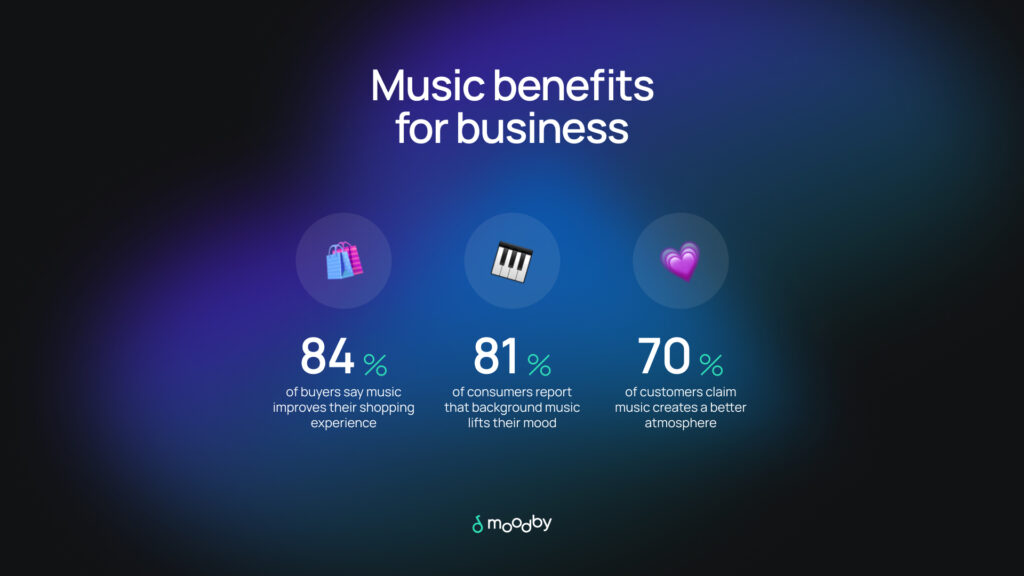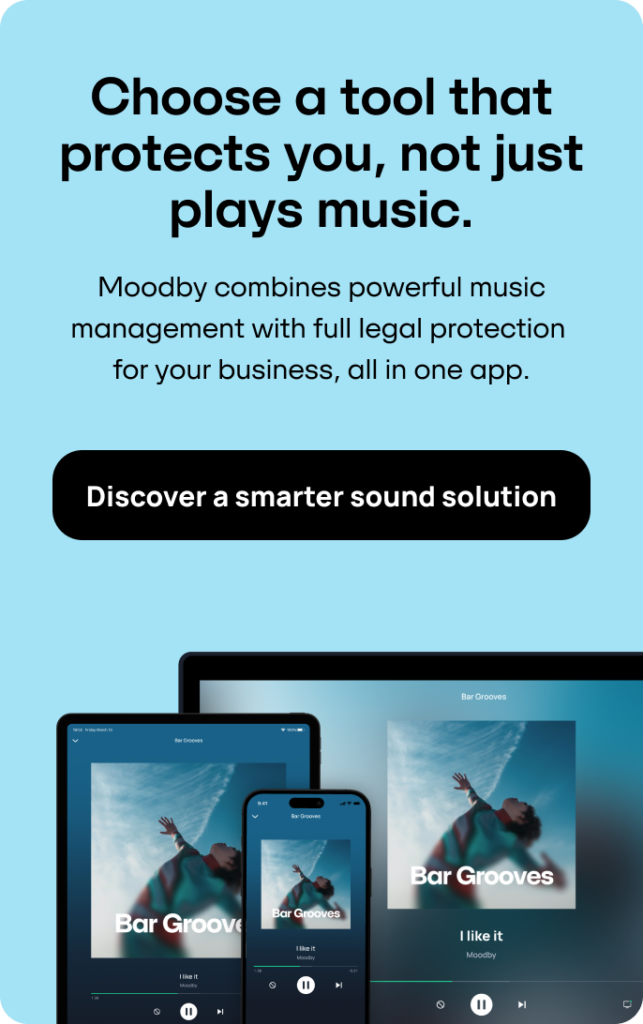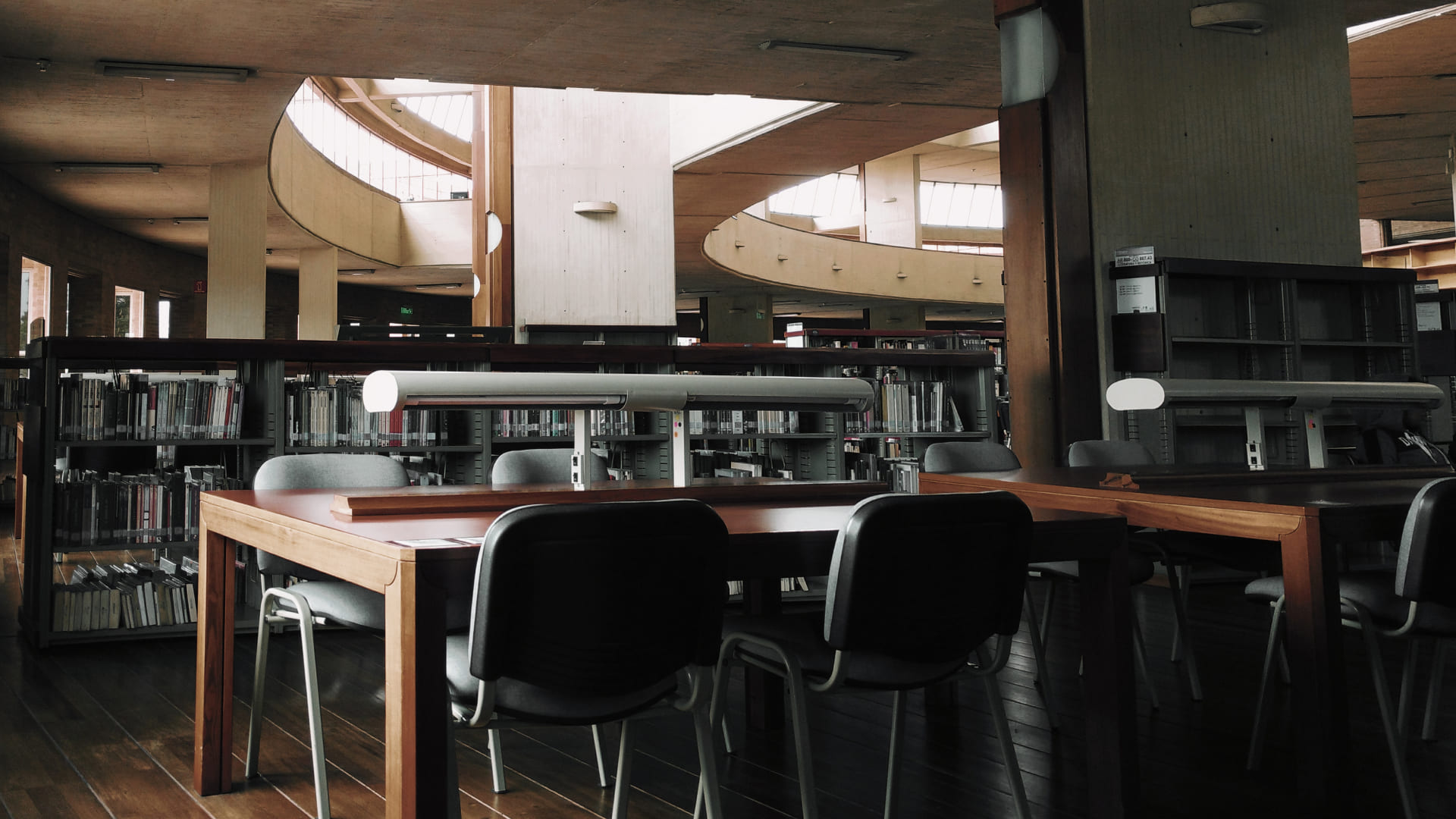An ultimate guide to choosing background music for business

If used properly, background music is an effective marketing tool that helps venues like bars, restaurants, and retail stores engage customers, reduce churn, and grow income. However, the role of music is often underestimated.
A number of establishments don’t recognize that appropriate music can not only set the mood of a place but affect customer behavior, encouraging buyers to stay longer, spend more, and retain. We’ve described the psychological music effects on consumers in one of our previous posts.

In this article, we’ll consider how to choose background music for business, tailoring it to your needs and goals. You will also learn what bottlenecks you may encounter when playing music tunes that don’t correlate with the vibe of your venue.
- Issues you may face playing inappropriate music
- Background music has to fit certain factors
- Aspects to consider when choosing music for business
- Top 6 tips to choose background music for business
- Why is Moodby Play a great music streaming service?


Issues you may face playing inappropriate music
Recognizing the role of background music, the majority of establishments typically use radio or Spotify’s playlists. However, this sounds great up to the moment when beautiful compositions are interrupted with multiple ads or visitors have to listen to songs chosen by AI that don’t suit the atmosphere at all.
There are many other issues you’re likely to encounter, including:
- Fines imposed for playing unlicensed music.
- Time-consuming playlist creation, resulting in wasting a lot of money and effort.
- Inconsistent music tempo and volumes destroying the atmosphere and making staff resolve the problem instead of servicing customers.
- Extra costs spent on DJs, professional music curators, or/and live music performances.
- Inappropriate music (offensive language, unsuitable genres).
- The lack of regular playlist updates, which leads to guests and staff being fed up with the tracks continuously played in the venue.
- Inconsistent music programs across multiple chain locations decreasing brand recognition.
So, let’s find out how to pick the right background music for your business.
Background music has to fit certain factors
1. The target audience’s preferences
By playing music your customers love, you’ll boost their satisfaction and generate a higher profit. When guests are happy to hear their favorite music tracks played, their mood lifts. As a result, they stay longer and retain.
Analysts revealed that familiar music positively affects consumers and significantly correlates with their buying intentions. This way, it is crucial to adjust to the needs and expectations of the target audience.
2. Brand positioning
Before choosing background music, you should identify the main venue characteristics, since people associate places with certain genres and volume. It will be weird if you play hard rock, say, in a classic French restaurant or switch on slow compositions too loud.
You should also take into account music aspects such as tempo and language. In an Irish pub, for instance, using a playlist with national bright music will be a sure-fire way. In case you aim to reach out to different audiences, it is more challenging to shape brand identity but is still possible if you know music psychology. Let’s see a hands-on example.
Based in Switzerland, Pavillon Bar & Kitchen provides guests with the comfortable setting for having lunch, dinner, tea, and cocktails. The bar strove to make an offer that adapts to any time of the day. For this purpose, they use different genres and tempo:
- Daytime. 76 decibels with a playlist containing vocal tracks familiar to customers.
- Aperitif time. 85 decibels with jazz and soul compositions.
- 10pm and later. 93 decibels with live DJs playing funk and hip-hop.
Furthermore, Pavillon invites DJs to play techno and many forms of EDM on Friday and Saturday nights. On summer nights, live bands play music outside to entertain guests.
3. Employees’ tastes
Staff productivity will decrease if the team has to listen to compositions they hate or short playlists that get boring very soon. Meanwhile, tailored background music in the workplace can boost productivity by up to 15%, as reported by the study of 2,000 participants.
For example, many respondents find that certain types of instrumental music can help them perform tasks faster. What’s more, analysts revealed that relaxing music stimulates the brain, so that specialists become bored less easily and stay focused.
Aspects to consider when choosing music for business
1. Genre
Experts report that different kinds of music have different effects on perceived atmosphere and the amount spent by consumers. The study of the impact of background music on shoppers in a wine store proved that playing classical music resulted in higher spending compared to Top-40 pop songs.
In this regard, venues should pick genres aligning with the audience’s preferences to evoke the desired experiences. Classical compositions, for example, help create a prestigious, elegant ambiance, which is perfectly suited for luxurious hotels and restaurants. Joyful music like disco, hip-hop, and R&B can motivate people to workout with more energy and pleasure.
2. Visual design
Matching background music with the visual design of an environment helps establishments create a wonderful vibe and drive conversions. Playing music that is high in bass, for instance, can allow retail stores to increase sales of dark shelves while using music that is high in treble may push up the sales of products on light shelves.
3. Language
The language of background music may also affect consumer spending and brand perception. Music with strong national associations activates related knowledge, stimulating people to take goods from that country. When listening to, say, German music, people may want to buy beer and bratwurst.
4. Sound
Loud background music can distract customers from reading product information. The study discovered that the purchase amount in a restaurant was larger when music was soft in volume than when it was loud. In stores, loud background music shifts shopper preferences to relatively simple visuals instead of more complex ones.
Top 6 tips to choose background music for business
- Play music where elements in each song or composition match. Choose or compose playlists with tracks that have similar vocals, instrument (e.g., pianos, guitar, saxophone), sound, or rhythm.
- Mix vocals and instrumentals. If you use instrumental music, professional DJs recommend that you play the vocals, too. This will help you diversify a playlist, meet different tastes, and provide a more engaging customer experience.
- Play music having a similar “beats per minute” (BPM), genre, or key. To create a perfect vibe and smooth experience, you can pick similar tracks that will not distract customers from enjoying the place. In case you need to change the mood, you can adjust the tempo of background music. For instance, to encourage guests to dance, it is advisable to increase BPM and switch on something more energetic like hip-hop, disco, or latin.
- Switch between popular and not well-known music tunes. If playing recent hits only, the audience may get irritated with songs they listen to everywhere, everyday. So, you should include either famous and not well-known tracks in playlists. On top of that, consumers are likely to be happy about discovering something new. The main rule here is to use similar compositions to keep the same vibe.
- Play track remixes but introduced by another artist. By following this DJs’ advice, you’ll manage to keep a consistent customer experience. You’ll also avoid the risk of annoying guests with hits performed by true stars and being played in every place they visit.
- Adjust the energy level to shape the necessary mood. The music energy level should not be the same throughout the day. In the nights and evenings, you can move it up to create a more entertaining atmosphere. Increase BPM, make the sound louder, and play energetic genres.
If some people start dancing, play for them to encourage others to join. In case you are the owner or DJ in a night bar or club, you can lower the energy level at the end of the night when people are too tired.
To make sure background music will fully match your goals, you should incorporate a specialized B2B music streaming service providing personalized comprehensive playlists scheduled to different times of the day. Let’s see what solution you should try out.
Why is Moodby Play a great music streaming service?
Founded in 2019, Moodby is a B2B music streaming service that offers an extensive library of regularly updated playlists and personalized stations compiled by professional DJs and local experts. The platform includes millions of songs licensed for commercial use. You can browse playlists adapted to different venues, from restaurants to spas and hotels.
With Moodby Play, you get full control over the music played in your venue, creating an awesome atmosphere and increasing customer retention.
Moodby Play provides:
- Pre-scheduled stations
- Access from any device
- Explicit lyrics filter
- No ads or interruptions
- The possibility to skip and block songs in playlists
- Easy setup, no hardware required to start streaming
- Offline mode
- Custom stations created by experienced music curators
“Spotify and all the other music platforms are ok up to a certain point, but algorithms are limited, nothing beats the unique detail and nuance that a music professional can add to the mix. Music curation is a growing need and a business that ultimately creates atmosphere, identity, branding – which all result in that X factor: loyalty.” —George Marchant, the head of Pavillon Bar & Kitchen.

